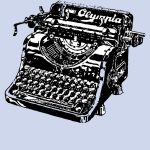
STAY IN THE BUNGALOW KNOW!!!
Sign up for our newsletter & receive our FREE E-book, 7 VITAL Things to Do Before You Hire a Contractor.

 Here you are in your empty house. It echoes. It promises. It suggests. It perplexes.
Here you are in your empty house. It echoes. It promises. It suggests. It perplexes.
In this article, I am going to wrap up all the points of how to decorate a bungalow living room & I will probably add a few, hopefully, wise words of advice too!
This article is written from my own needs as expressed in my responses to the questions in Part 1, as well as my own viewpoint, as expressed in the earlier articles. I am always seeking more knowledge & honor all points of view, so I invite your comments & suggestions. I do request that you honor my pixels.
I’m going to assume that you have read all of the articles in this series. They will form a good reference point as you navigate the panorama of infinite choices. Here’s a review of what each part covers & they will be referenced going forward:
BUNGALOW DON’TS
A handy dandy list of design boo-boo’s to avoid in any style of house with a special focus on bungalows.
DESIGNING YOUR BUNGALOW’S INTERIOR SPACES- an Introduction
The Craftsman Magazine was the arbiter of taste regarding this aesthetic. This post is primarily an article laying out the basic philosophy & design theory of the Craftsman movement, highly applicable when you are looking at how to decorate a bungalow living room.
DESIGNING YOUR BUNGALOW’S INTERIOR SPACES- Part 1
Determining your own needs & message. Looking into your our heart- an exercise. If you have not yet done it, please do so. The decisions that you make here will form pivotal roles going forward.
In this article I have included the wishes of my own heart, which again, will be referenced below.
DESIGNING YOUR BUNGALOW’S INTERIOR SPACES- Part 2
Interior design elements/building blocks: The use of space & lighting in creating beauty, harmony & functionality.
SPACES- Part 3
More pieces of basic design: Types of lines, using different shapes & forms, patterns, textures & color to create a space that you will love.
DESIGNING YOUR BUNGALOW’S INTERIOR SPACES- Parts 4 & 5
Using the principles of design- unity/integration, balance, rhythm, emphasis, scale & proportion, contrast & details to decorate a bungalow living room.
When you start doing the steps of furnishing & embellishing, please follow this order because each one builds on the previous ones. I am going to include the numbers of the previous posts so you can see what basic design rules I followed for each one. If you should hang-up on the execution of any one step, take a moment to consider if there are any previous ones that might take more considering or more action.
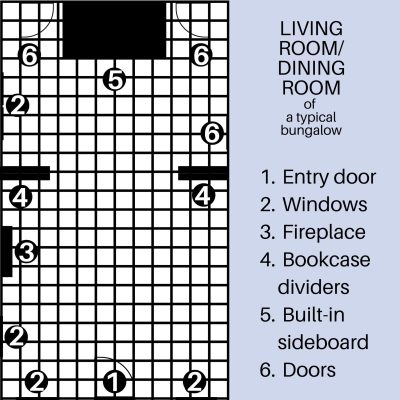 1. Create an overhead scale model of the room or rooms if your bungalow’s dining room is joined to the living room. (Probably.)
1. Create an overhead scale model of the room or rooms if your bungalow’s dining room is joined to the living room. (Probably.)
You can do this on paper or electronically. (I am going to assume that you do not have a design program.) I like to use Canva, a free design program that allows me to do pretty much anything that I need to do. If you do not have a large computer screen, whether or not you have a design, program, I suggest gathering a large pad of grid paper, a ruler, a drafting pencil, an eraser & pair of scissors.
Sketch in the key architectural features of the room- the windows & doors, fireplace, built-ins, wainscoting, chair & plate rails. Here’s my sketch of my 1925 bungalow in Tampa, as an example.
Number each type of fixed element, the existing architectural elements that cannot be changed.You can use the same number for things that are duplicates of the same items.
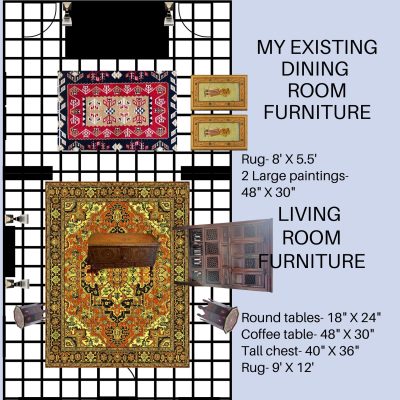 2. Take the measurements of each piece of furniture that will come with you. Include all dimensions & insert them to scale.You can do more than one rendition of this image, fooling around with different pieces. Some of the items that you will bring are not forever pieces. Spaces evolve as you decorate your bungalow.
2. Take the measurements of each piece of furniture that will come with you. Include all dimensions & insert them to scale.You can do more than one rendition of this image, fooling around with different pieces. Some of the items that you will bring are not forever pieces. Spaces evolve as you decorate your bungalow.
When I left the Hare House, I sold many pieces with the house. They had been purchased specifically to make the Hare’s feel welcome & comfortable should they ever decide to pay a call. (Fine, they were dead. I didn’t care.) Other ones didn’t fit my new plan which was to go more ethnic, so that’s what came to Tampa with me, my multi-cultural mash-up of Chinese, Moroccan, & East Indian & my Turkish rugs.
The colors & hand craftsmanship of these cultures fit beautifully with A&C & had heavily influenced the Movement so they seemed right to me. (An Introduction.) I was ready for more color & fortunately, it all worked out in my 1925 bungalow which had a more casual feel than my 1910 Craftsman. (Parts 1 & 2 & 3– wishes & space & lines & color.)
I added them to the grid that I made. These are shown on the diagram, named by type of item. I had some problems to solve here, the main one being the shape of the 2 rooms. Even with the added bookcase dividers (Some bozo had removed the original ones.) it was just too long & thin. There was no division between the 2 spaces. (No open plan for me, thank you!) I used Part 3 for this, deciding on the spaces I wanted to delineate & then using the lines of the rugs to form those areas.
You can clearly see what you are missing by this point! I needed a couch & chairs, a table for under my dining room windows & really needed a dining table & chairs.
I stuck with the symmetrical lay-out of the rooms because A&C just seems to feel symmetrical. I was ready to change it should the new furniture demand it but it did not.
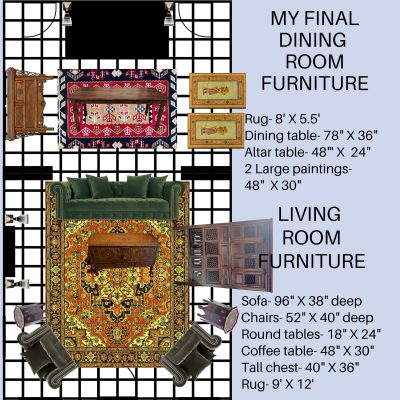 3. So here are the final, fully furnished rooms. It took me a long time to find the perfect couch & chairs because the room was so large & I am never in favor of using a large number of pieces. I needed comfortable ones that were appropriate in the scale of the room, to which I could add my bamboo folding chairs when I was expecting a houseful of people. (Part 1, wishes.)
3. So here are the final, fully furnished rooms. It took me a long time to find the perfect couch & chairs because the room was so large & I am never in favor of using a large number of pieces. I needed comfortable ones that were appropriate in the scale of the room, to which I could add my bamboo folding chairs when I was expecting a houseful of people. (Part 1, wishes.)
I wanted to anchor the room with A&C inspired furniture, not true Craftsman because by 1925, when my house was built, Stickley’s Craftsman style was out of fashion, & considered odd. He had declared bankruptcy in 1915 & his new wares looked more typical 20’s than A&C. I decided to harken back instead of moving forward. The furniture of 1925 was more petite & not suitable in this space which one of my friends described as a bowling alley because someone had ripped out the built-ins. (I built them back.) And even with the dividers it was a lo-o-o-ong space!
The chairs & couch that I chose were large & geometric, using the principles of scale & proportion found in Part 4. They were right for the sizes of the rooms as well as the built-ins that I have designed to be rather chunky. They too served to visually shrink the length of the 2 rooms, with the couch providing a short wall between them.
The principle of unity, mentioned in the same article, was achieved through color & through theme. Even the new pieces like the dining table with its distressed finish, looked old.
The reason that you are doing all these steps in learning how to decorate a bungalow living room is to accomplish what you learned about your needs & wants in Part 1. You are creating a home that will enhance your life, help you achieve your goals & give you a brighter outlook on daily life. There are few things that are more about you than your living space.
Let me know if you should need some help!
Check out my Pinterest page to see more living rooms.

Sign up for our newsletter & receive our FREE E-book, 7 VITAL Things to Do Before You Hire a Contractor.
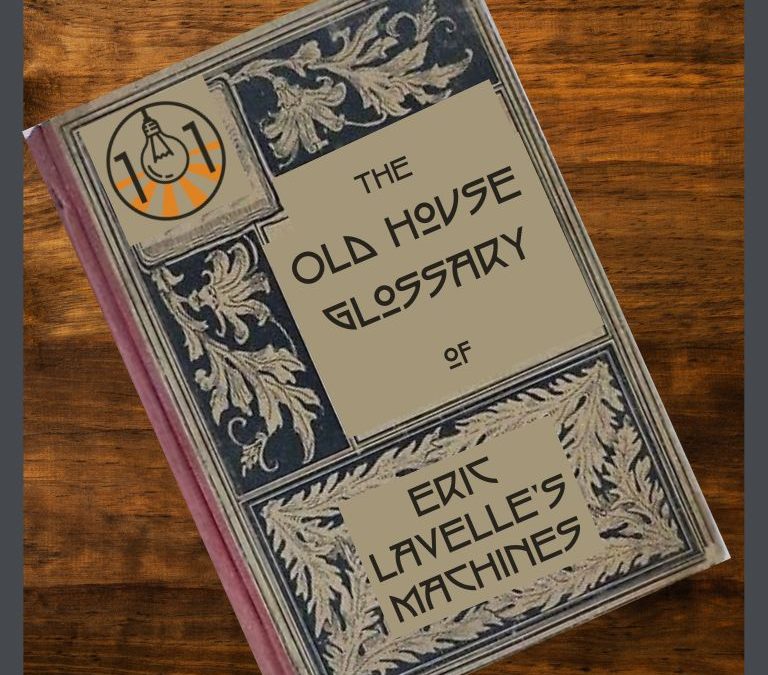
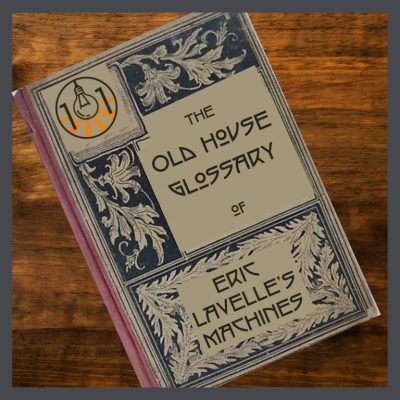 Master restorer, Eric LaVelle writes delightful articles about his work, which includes rehabilitating old buildings & rescuing antique machinery that he uses in his rehab work. He has graciously allowed me to include his stories in my blog. They include technical terms many of you (that includes my own self!) don’t understand, so I am including a GLOSSARY here for you so that you can most easily follow the bouncing ball.
Master restorer, Eric LaVelle writes delightful articles about his work, which includes rehabilitating old buildings & rescuing antique machinery that he uses in his rehab work. He has graciously allowed me to include his stories in my blog. They include technical terms many of you (that includes my own self!) don’t understand, so I am including a GLOSSARY here for you so that you can most easily follow the bouncing ball.
I am going to put it in alpha order because I am guessing that you’ll find these terms repeated in more than 1 post.
Each article also has links to videos about the machines that are discussed. I have tried to find videos that show the old machines & the tasks each on is able to perform.
Should I have missed any words, drop me a line & I will include them.
Axle/shaft
Some of the old books also refer to them as journals.
A rod or spindle (either fixed or rotating) which goes through the center of a wheel or a group of wheels. Every rotating shaft must be supported by bearings. Axles are used in machines & also in vehicles.
Babbitt bearings
A bearing is a device that supports, guides, & reduces the friction of motion between fixed & moving machine parts.
Babbitt bearings are made of certain types of alloys, which are melted down & cast to produce the bearing surface.
Band saw
A power saw that uses a long blade loop, like a ribbon, stretched between two wheels. The blade continually rotates along with the wheels. Take a look at the video to see what it can do.
Beds
Usually used in reference to molders, jointers & planers. They are the flat, usually cast iron areas that the wood slides over while being molded, planed or jointed
Box joint machine
Cuts the corner joints for wooden boxes.
Chain hoist
A lifting device that can lift large amounts of weight by simply pulling on a chain.
Circular resaw
A machine that makes two thinner boards from one thicker board using a circular blade.
Door clamp
A large clamping machine that pulls door components together tightly, keeping them straight and square.
Drum sander
A machine that uses a cylinder (drum) wrapped with sandpaper to give a very smooth surface while maintaining a constant thickness.
Heads
Rotating pieces that hold the blades on planers, jointers, molders, tenoners, & others.
Jointer
A machine that cuts away the surface of a board to make perfectly flat, or the edge of a board to make it perfectly straight.
Knife switch
Used commonly in the past, a knife switch is used to control the flow of electricity in a circuit.
Line shaft
A long rotating shaft that connects to multiple machines, usually via flat belts, powering multiple machines with a single source of power.
Louver groover, also called a blind stile mortiser
Cuts the slots in the stiles, which are the side piece of the frames of a shutter to accept the wooden slats.
Lumber
Harvested wood, whether cut into logs, or wood cut to use in construction.
Matcher
A machine that cuts both edges of a board at once to give either smooth edges, a shiplap pattern, or tongue and groove pattern. A planer matcher does both at once.
Mill
A shortened version of “planing mill”, where they took rough sawmill lumber and turned it into either smooth dimensional lumber (lumber that is cut to standard widths and depths, but never specific lengths. Typical dimensional lumber is 2x4s, 2x6s, and 4x4s) or other finished products.
Millwork
Millwork is historically any wood mill produced decorative (rather than structural) materials used in building construction. It is often is in a deteriorated condition from the elements & must be repaired, recreated.
Miter
A joint made by placing 2 pieces of wood together at a 90 degree angle.
Miter trimmer
Shaves the end of a mitered board with a blade similar to a guillotine in order to make a perfect fit.
Mortiser or morticer
A woodworking machine used to cut square or rectangular holes in a piece of lumber.
Outriggers
Supports that extend out beyond a machine so it can’t tip over as easily.
Phase wires
The phase wires are the hot wires used in an electrical power system.
Phase converters
The majority of phase converters are used to produce three-phase electric power from a single-phase source, thus allowing the operation of three-phase equipment at a site that only has single-phase electrical service.
Three-phase electric motor
A three-phase electric motor contains four wires (three hot wires and one neutral wire) and uses three alternating currents of the same frequency.
ERIC LAVELLE, MASTER PRESERVATIONIST, Part 6
Are they lunatics, or are they heroes?
![]() ERIC LAVELLE, MASTER HISTORIC PRESERVATIONIST, Part 1
ERIC LAVELLE, MASTER HISTORIC PRESERVATIONIST, Part 1
Giving old buildings new life.
![]() ERIC LAVELLE, MASTER HISTORIC PRESERVATIONIST, Part 2
ERIC LAVELLE, MASTER HISTORIC PRESERVATIONIST, Part 2
Learning about the old machines.
![]() ERIC LAVELLE, MASTER HISTORIC PRESERVATIONIST, Part 3
ERIC LAVELLE, MASTER HISTORIC PRESERVATIONIST, Part 3
More lessons, learned the hard way!
![]() ERIC LAVELLE, MASTER HISTORIC PRESERVATIONIST, Part 4
ERIC LAVELLE, MASTER HISTORIC PRESERVATIONIST, Part 4
The first trip to the old Lapp mill, built in 1892.
![]() ERIC LAVELLE, MASTER HISTORIC PRESERVATIONIST, Part 5
ERIC LAVELLE, MASTER HISTORIC PRESERVATIONIST, Part 5
Playing “Be Right or Die.” It’s a fun game.
![]() ERIC LAVELLE, MASTER PRESERVATIONIST, Part 6
ERIC LAVELLE, MASTER PRESERVATIONIST, Part 6
Are they lunatics, or are they heroes?
![]() ERIC LAVELLE, Introduction to the Machines
ERIC LAVELLE, Introduction to the Machines
Manufacturing before the Age of Electricity.
![]() ERIC LAVELLE, MASTER HISTORIC PRESERVATIONIST
ERIC LAVELLE, MASTER HISTORIC PRESERVATIONIST
How does he do it?
![]() OLD HOUSE RESTORATION VIDEOS- Eric Lavelle’s Antique Wood-Working Machines
OLD HOUSE RESTORATION VIDEOS- Eric Lavelle’s Antique Wood-Working Machines
Watch the old machines in action. They are loud!!!!
 STAY IN THE BUNGALOW KNOW!!!
STAY IN THE BUNGALOW KNOW!!!Sign up for our newsletter & receive our FREE E-book, 7 VITAL Things to Do Before You Hire a Contractor.
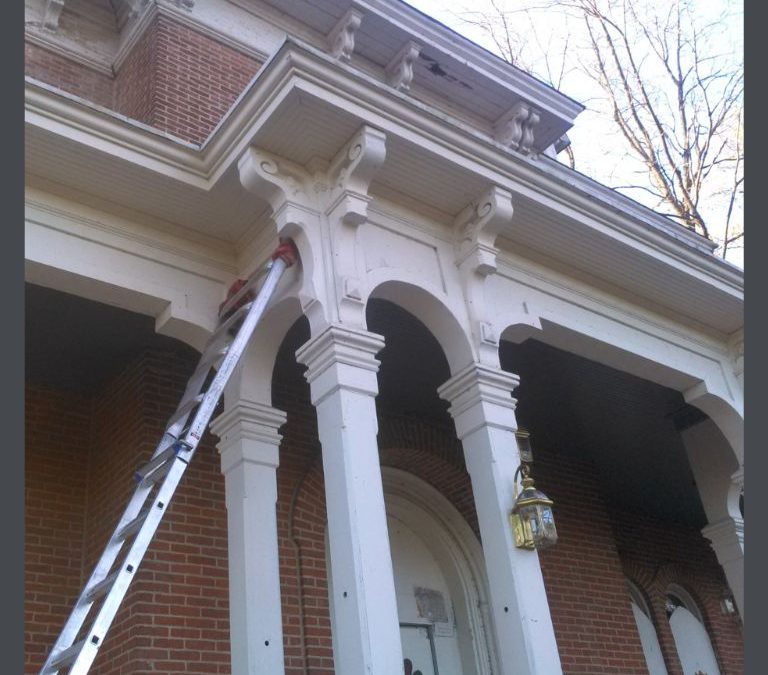
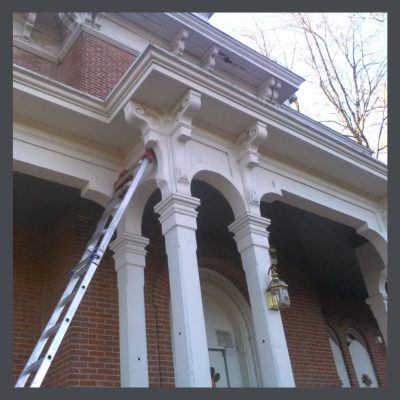 Eric LaVelle of Belleville, Illinois, is a master historic preservationist but takes it a step further. In addition to performing highly detailed work on houses that are extremely deteriorated, dangerous, ornate & enormous, he finds, salvages & repairs the antique construction machinery with which he works his magic.
Eric LaVelle of Belleville, Illinois, is a master historic preservationist but takes it a step further. In addition to performing highly detailed work on houses that are extremely deteriorated, dangerous, ornate & enormous, he finds, salvages & repairs the antique construction machinery with which he works his magic.
Eric was kind enough to allow me to publish his fascinating & inspiring story, which starts with his childhood interest in old houses, his own first old house, & the trials & tribulations of collecting massive antique machines & moving them to his workshop- without heavy lifting equipment!
He is a wonderful writer & his passion for the tools of his trade is evident in his writing & in every dangerous stunt he performs to secure some of them!
I have also created a GLOSSARY. The words in the GLOSSARY are linked in the text. If you see any words here that you don’t understand, let me know & I will add it.
I have also created a playlist on YouTube on which you can see all the machines in action. Then, there’s also a page about all the simple tools that he uses when he’s rescuing the machines. Simple though they be, they utilize physics & ingenuity to wrestle hug machines from dangerous places.
As a child, I was fascinated with 19th century houses, but it wasn’t until 1996 that I bought and lived in one. My wife and I moved into an 1880’s two story house in a small town. Most of the interior woodwork was intact, as were the ornate front and back doors.
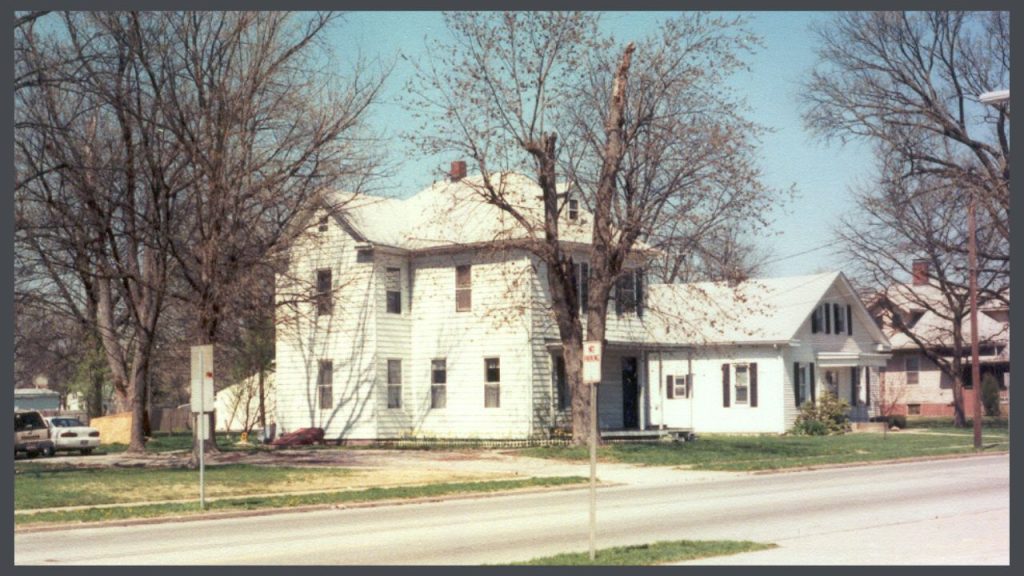
I was fascinated with the woodwork, and wanted to be able to reproduce it, but I had no idea how they had done it, or the equipment they used to do it. I began reading Old House Journal and Old House Interior magazines to learn more about these houses, and how to restore them. The internet was new to me, and there wasn’t a great deal of helpful information on it at the time.
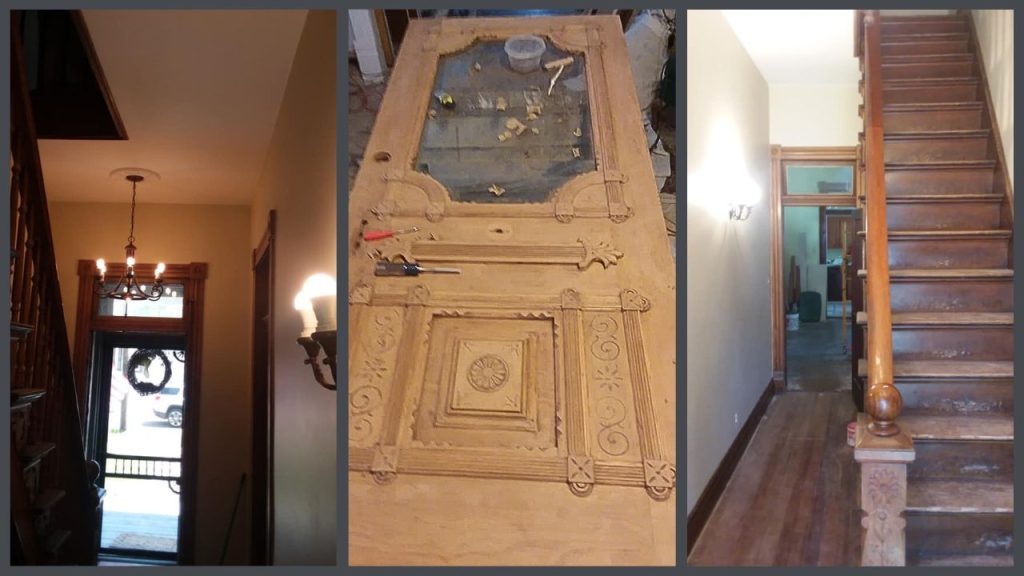
In order to gain the skills to reproduce this millwork, I bought a few small, second hand machines at local auctions. My budget then was extremely small, so in order to get lumber, I resorted to salvaging it from buildings being torn down. The largest of these salvage projects was a dairy barn made mostly of oak and hickory, about 35’x50′ in size, and 30-40ft tall. I spent some time analyzing that structure, and ended up disassembling it from the top down, in a manner that was the reverse of how it was built. Some of my friends helped me do it. It was a physically punishing and dangerous job. To haul the barn lumber, the farmer sold me a 16ft double axle trailer to haul away the lumber.
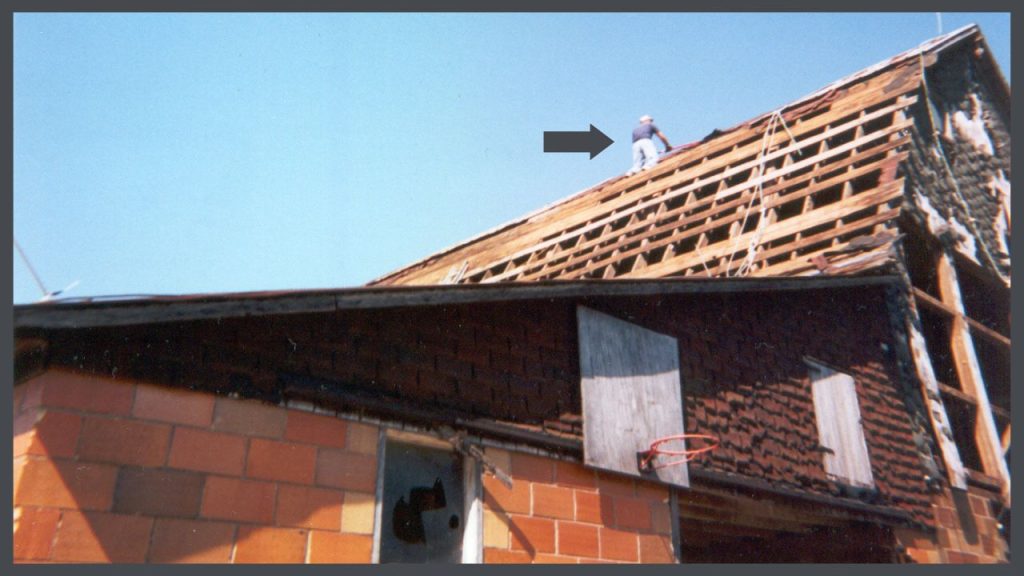
It was 2001, and I had mountains of salvaged lumber, so I needed machines to work with it. My budget was still extremely small, and I could only look at the catalogs of the larger modern machinery with longing. I simply wasn’t ever going to be to afford a shop full of those machines. I tried working some of the wood with hand tools, but found it to be much more frustrating than inspiring. My small machines would simply burn up doing any serious work.
In 2002, I stopped crying over the new machines I couldn’t afford when I got on eBay and found very old machines for sale for very little money. The first thing I decided I needed was a large bandsaw to resaw barn timbers. This one was 36″, much larger than those I saw in the catalogs. After having the high bid, I set out on a 4 hour drive to pick up the machine with my van and trailer. My Dad went with me. I filled the gas tank just before leaving, which took us all the way there with some gas to spare.
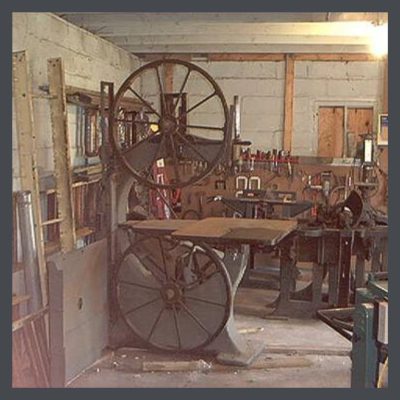
36″ bandsaw
I had never seen a 36″ bandsaw. I was shocked at the size of it. It was in a machine shop, and they were using it to saw aluminum. They loaded it with a forklift, but they didn’t really know what they were doing, and tried to lift it by the table, which promptly cracked. I didn’t know enough to tell them any different.
It was loaded sideways to the wind, and had some plywood guards built onto it, so it caught wind like a giant sail. Paying little attention, I filled the gas tank on the way out of town, figuring we’d have plenty to get home. I hadn’t even bothered to watch the gas gauge when we ran out of gas on the interstate about 30 miles short of making it home. It was then that I learned lesson #1: a loaded trailer, especially with an enormous amount of wind drag, burns a lot more gas than an unloaded one.
After hitch hiking to the gas station and filling up, we got the saw home safely. As I was going in and out of the driveway, there was a dip in the pavement, and I bent the cross bar that held the jack on the trailer. I drove to a local welding shop where they could cut it out and weld a new piece in. The giant saw was still on the trailer. The owner of the shop looked at it and started talking about “3 phase motor” and something called “babbitt bearings”. I had no idea what those were, so I just nodded my head, and looked them up later. These would lead to the development of skill#2: building a phase converter, and skill #3: pouring babbitt bearings.
We had just bought another house with a garage, and were moving there, so I wanted to unload the saw at that location. I had no idea how to move a 1500lb saw without any power equipment. This would require skill #1: rigging heavy machinery with hand tools. My Dad showed me that I could use my 48″ crowbar, the same bar I used to disassemble the barn, to slowly inch the saw off the trailer. It took me a very long time to move it that way. Since it was taller than the garage door, and I didn’t know how easy it was to remove the top wheel, I hooked a chain around the top of it, which was attached to the framing above the garage door, and tipped the saw so it was leaning into the opening of the door. I then stood it up by prying the base forward, and the saw stood up inside the garage.
At this point I had a long way to go. I still didn’t know how they made the millwork in my first house, and I didn’t have electricity in the garage, which was 130ft from the house.
![]() This article was written by Eric LaVelle, a master restorer of historic houses. He makes the woodwork with a shop full of antique machinery in Belleville, Illinoise. You can visit him on Facebook here.
This article was written by Eric LaVelle, a master restorer of historic houses. He makes the woodwork with a shop full of antique machinery in Belleville, Illinoise. You can visit him on Facebook here.
![]() ERIC LAVELLE, MASTER HISTORIC PRESERVATIONIST, Part 2
ERIC LAVELLE, MASTER HISTORIC PRESERVATIONIST, Part 2
Learning about the old machines.
![]() ERIC LAVELLE, MASTER HISTORIC PRESERVATIONIST, Part 3
ERIC LAVELLE, MASTER HISTORIC PRESERVATIONIST, Part 3
More lessons, learned the hard way!
![]() ERIC LAVELLE, MASTER HISTORIC PRESERVATIONIST, Part 4
ERIC LAVELLE, MASTER HISTORIC PRESERVATIONIST, Part 4
The first trip to the old Lapp mill, built in 1892.
![]() ERIC LAVELLE, MASTER HISTORIC PRESERVATIONIST, Part 5
ERIC LAVELLE, MASTER HISTORIC PRESERVATIONIST, Part 5
Playing “Be Right or Die.” It’s a fun game.
![]() ERIC LAVELLE, MASTER PRESERVATIONIST, Part 6
ERIC LAVELLE, MASTER PRESERVATIONIST, Part 6
Are they lunatics, or are they heroes?
![]() ERIC LAVELLE’S OLD HOUSE MACHINES GLOSSARY
ERIC LAVELLE’S OLD HOUSE MACHINES GLOSSARY
I was clueless about these antique machines he uses & thought that you might be too!
![]() ERIC LAVELLE, Introduction to the Machines
ERIC LAVELLE, Introduction to the Machines
Manufacturing before the Age of Electricity.
![]() ERIC LAVELLE, MASTER HISTORIC PRESERVATIONIST
ERIC LAVELLE, MASTER HISTORIC PRESERVATIONIST
How does he do it?
![]() OLD HOUSE RESTORATION VIDEOS- Eric Lavelle’s Antique Wood-Working Machines
OLD HOUSE RESTORATION VIDEOS- Eric Lavelle’s Antique Wood-Working Machines
Watch the old machines in action. They are loud!!!!

Sign up for our newsletter & receive our FREE E-book, 7 VITAL Things to Do Before You Hire a Contractor.
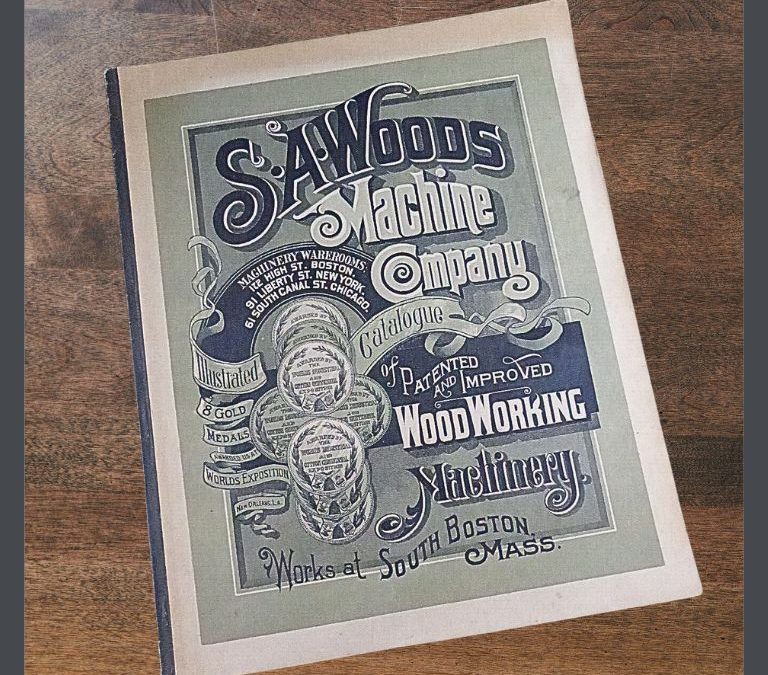
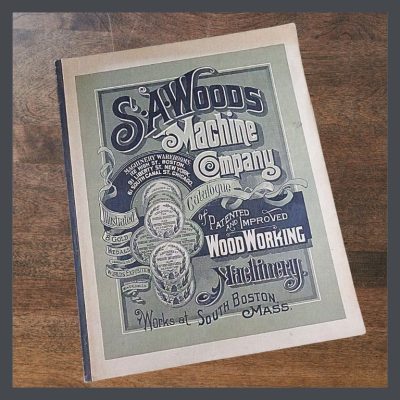 It was summer of 2002, and I had a bandsaw, but I knew that I would need more than that.
It was summer of 2002, and I had a bandsaw, but I knew that I would need more than that.
By this time I recognized that the internet was both the biggest library and market place ever known. I began to study the woodworking process. I learned some things from my uncles about woodworking, but I needed to learn much more. I also needed to learn about the machines themselves. I began to search and read both Vintagemachinery.org, and the Yahoo group that would become OLD WOOD WORKING MACHINES.
These sites gave me access to photos and catalogs of machinery starting in the mid 1800’s. It also allowed me to correspond with, and read conversations between all types of woodworking professionals, with combined experience of hundreds of years.
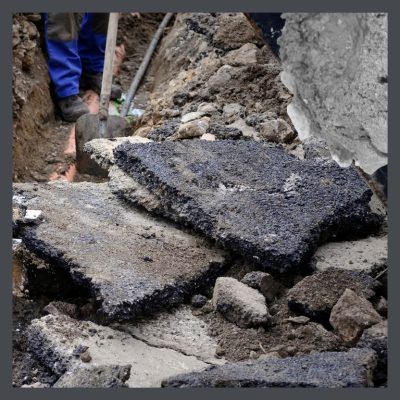 In order to run anything at all, I was going to need electricity in the garage, 130ft behind the house. Originally the machines ran on steam, but had been retrofitted with 3 phase motors. I bought an entire spool of electric wire on eBay, and proceeded to dig a 24″ deep trench across the yard. It would have been nice to rent a trencher, but I doubt it would have made it through the 2ft deep packed gravel of the driveway, the bricks, rocks, tree roots, and the 500lb chunk of concrete with the bottom of a clothesline pole embedded in it.
In order to run anything at all, I was going to need electricity in the garage, 130ft behind the house. Originally the machines ran on steam, but had been retrofitted with 3 phase motors. I bought an entire spool of electric wire on eBay, and proceeded to dig a 24″ deep trench across the yard. It would have been nice to rent a trencher, but I doubt it would have made it through the 2ft deep packed gravel of the driveway, the bricks, rocks, tree roots, and the 500lb chunk of concrete with the bottom of a clothesline pole embedded in it.
After running the wire and hooking up a sub panel in the garage, I knew I needed to build something called a phase converter to convert the single phase residential electricity that I had into something that would run the industrial motors. I found information online about how to build it, then bought an old 20HP 3 phase motor, which I would spin up to speed with a small single phase motor, then turn on to provide the third leg of the power. This was called a pony start rotary phase converter. When I first hooked it up, the big motor wouldn’t run. Feeling defeated, I went back in the house, with that little voice in my head telling me I couldn’t do it. I imagined a face behind that voice, then imagined myself punching it square in the nose before going back out and figuring out the motor was configured for 440 volt operation instead of 220v (lesson #2: never assume the wiring is hooked up the way you need it). A little reconnecting according to the chart on the side of the motor, and I was up and running with 3 phase power.
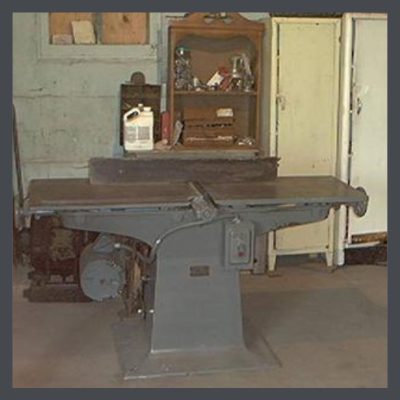
My first jointer, “Munch,”made by John White Machine Co. in about 1878
I knew from experience that lumber that was almost straight and almost flat made parts that almost fit. I learned that the jointer was the machine to make parts that actually fit.
I again consulted eBay, where I bought a 16″ jointer that happened to have a square head. After reading about the increased danger of square heads in a jointer, my morbid sense of humor compelled me to refer to the machine as “Munch” for its propensity to munch fingers.
The biggest problem with this machine was that the beds were shorter than normal. I’d later replace it with another machine that was not much newer, but had longer beds and a round head. I bought that machine from an elderly man named Max, who owned 35 forklifts.
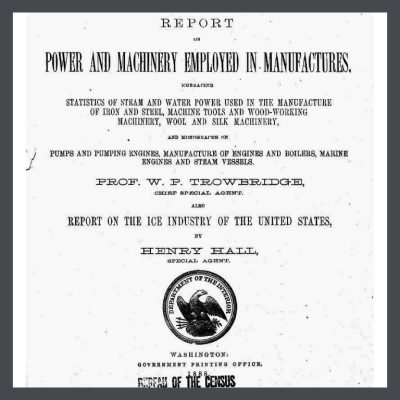
It’s a goldmine of information on tools used in manufacturing.
On the Vintagemachinery.org site, I found a link to something called the 1880 Census Report. This report was illustrated, and gave an accounting of the technological advances in various fields, including woodworking. It had drawings and descriptions of the woodworking machines available at the time.
I used it to make my shopping list. I now knew exactly what machines they used to produce the millwork in my 1880’s house.
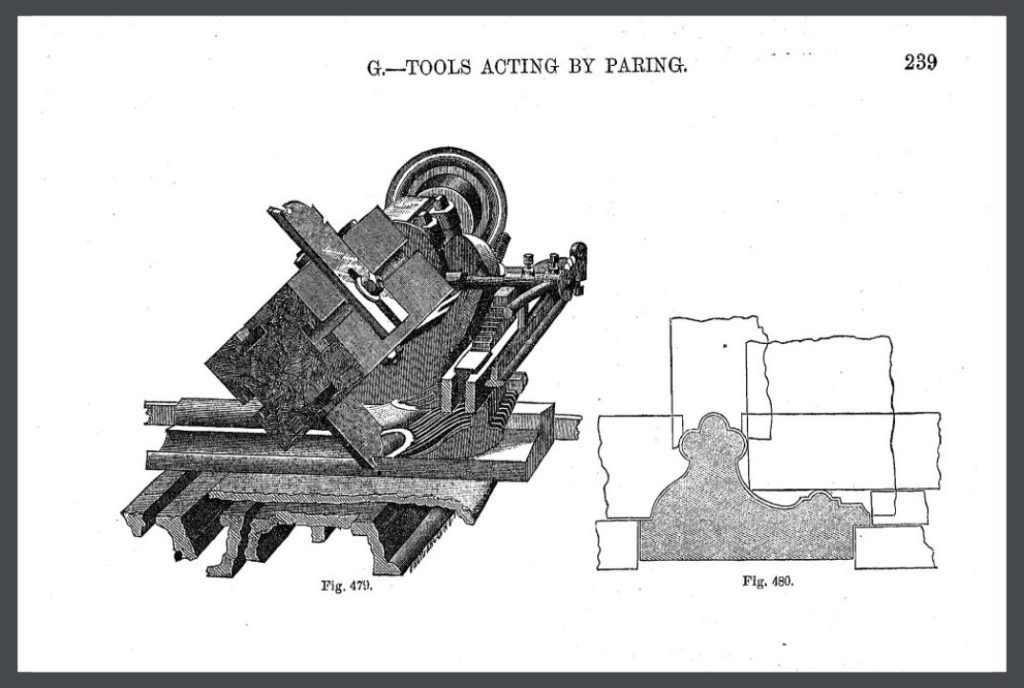
Drawings of how the cuts are made on a 4 head molding machine, from the 1880 Census Report.
![]() This article was written by Eric LaVelle, a master restorer of historic houses. He makes the woodwork with a shop full of antique machinery in Belleville, Illinoise. You can visit him on Facebook here.
This article was written by Eric LaVelle, a master restorer of historic houses. He makes the woodwork with a shop full of antique machinery in Belleville, Illinoise. You can visit him on Facebook here.
![]() ERIC LAVELLE, MASTER PRESERVATIONIST, Part 1
ERIC LAVELLE, MASTER PRESERVATIONIST, Part 1
Rescuing old houses.
![]() ERIC LAVELLE, MASTER HISTORIC PRESERVATIONIST, Part 3
ERIC LAVELLE, MASTER HISTORIC PRESERVATIONIST, Part 3
More lessons, learned the hard way!
![]() ERIC LAVELLE, MASTER HISTORIC PRESERVATIONIST, Part 4
ERIC LAVELLE, MASTER HISTORIC PRESERVATIONIST, Part 4
The first trip to the old Lapp mill, built in 1892.
![]() ERIC LAVELLE, MASTER HISTORIC PRESERVATIONIST, Part 5
ERIC LAVELLE, MASTER HISTORIC PRESERVATIONIST, Part 5
Playing “Be Right or Die.” It’s a fun game.
![]() ERIC LAVELLE, MASTER PRESERVATIONIST, Part 6
ERIC LAVELLE, MASTER PRESERVATIONIST, Part 6
Are they lunatics, or are they heroes?
![]() ERIC LAVELLE’S OLD HOUSE MACHINES GLOSSARY
ERIC LAVELLE’S OLD HOUSE MACHINES GLOSSARY
I was clueless about these antique machines he uses & thought that you might be too!
![]() ERIC LAVELLE, Introduction to the Machines
ERIC LAVELLE, Introduction to the Machines
Manufacturing before the Age of Electricity.
![]() ERIC LAVELLE, MASTER HISTORIC PRESERVATIONIST
ERIC LAVELLE, MASTER HISTORIC PRESERVATIONIST
How does he do it?
![]() OLD HOUSE RESTORATION VIDEOS- Eric Lavelle’s Antique Wood-Working Machines
OLD HOUSE RESTORATION VIDEOS- Eric Lavelle’s Antique Wood-Working Machines
Watch the old machines in action. They are loud!!!!

Sign up for our newsletter & receive our FREE E-book, 7 VITAL Things to Do Before You Hire a Contractor.
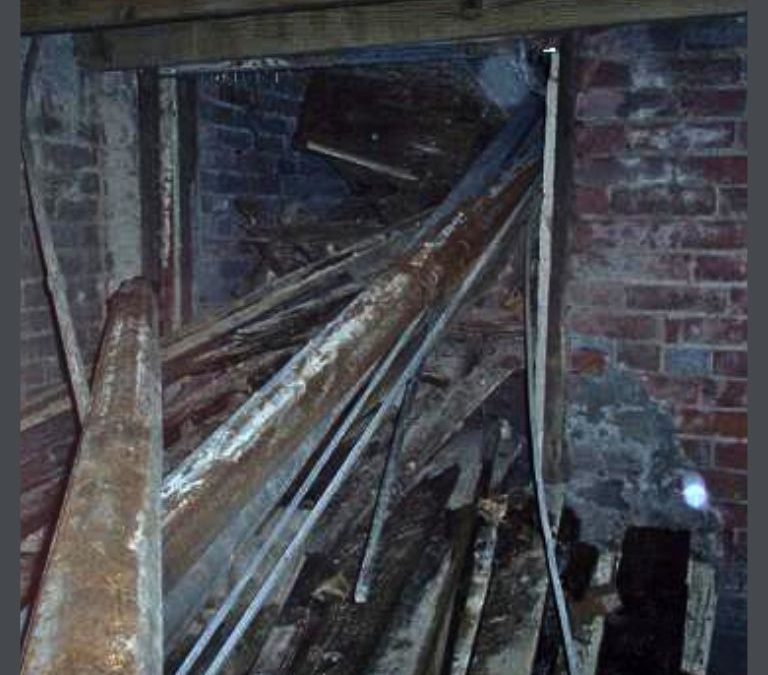
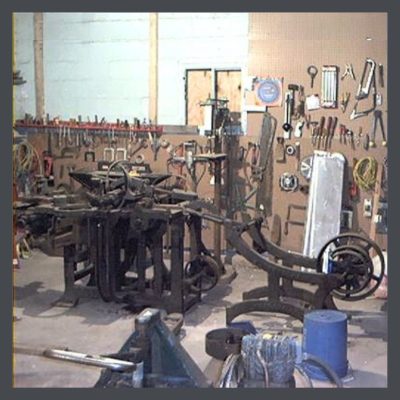
4 head Jos. O Colladay molding machine
This is post #3 in a series about how I got into restoration. At this point I was putting together the millwork shop.
In January of 2003, a whole barn full of machines came up for sale on eBay. I was interested in only one of these, an 1880’s Jos. O. Colladay 4 head molding machine. I knew that this type machine made all the straight moldings for houses in that era. It closely resembled the drawings in the 1880 Census Report.
I waited until the last 30 seconds of the auction to put in my high bid of $202.50. I won. It was located in Schuylkill Haven, PA, a bit over 800 miles from me. In those days, gas was cheap, and I could drive that far and back for a little over a hundred dollars. I immediately planned a trip to pick it up, and my wife agreed to go along.
In my efforts to retrieve this machine, my determination would outstrip my good sense not once, but twice.
 We set out on a cold January day, and when we got about 400 miles from home, it started to snow. By this time we were in the mountains of West Virginia. It was dark. My wife was taking a turn driving, when she looked over and told me she couldn’t steer. The road was getting really slick. We pressed on until we got past the Pennsylvania state line. The weather was not getting any better, so after seeing cars off the road way too frequently, my wife convinced me we needed to stop and go home. When I found out we were still hundreds of miles from our destination, and the machines were on the second floor of the barn, with no reasonable way down, I agreed to go home. This was lesson #3: winter is a terrible time to haul stuff long distances.
We set out on a cold January day, and when we got about 400 miles from home, it started to snow. By this time we were in the mountains of West Virginia. It was dark. My wife was taking a turn driving, when she looked over and told me she couldn’t steer. The road was getting really slick. We pressed on until we got past the Pennsylvania state line. The weather was not getting any better, so after seeing cars off the road way too frequently, my wife convinced me we needed to stop and go home. When I found out we were still hundreds of miles from our destination, and the machines were on the second floor of the barn, with no reasonable way down, I agreed to go home. This was lesson #3: winter is a terrible time to haul stuff long distances.
The seller recommended I talk to the person who bought all the rest of the machinery there. He happened to live in Missouri, and would have to drive by my house anyway. Even though I had sniped the molder out from under him, he was gracious enough to offer to drive, if they could use my trailer to haul all of it home.
We set out on a February afternoon. He had brought a friend who could take turns driving. We collectively decided not to stop anywhere, but to go out and come straight back. Normally with three drivers, we could take turns taking naps, but I had the irrational fear that if I fell asleep, the driver would too, so I stayed awake the entire time.
The machines were located in a barn turned cabinet shop behind a second empire house. Both had been vacant and unused since the 1960’s. The door of the barn had “Dec. 1941” carved in it. The wiring was an ancient 2 phase system with open knife switches bolted to a workbench. Half the shop was run from one big 15HP 2 phase motor connected to a line shaft via a leather belt. Most places never even had 2 phase electric, and the ones that did mostly changed over to 3 phase years ago. Part of one of the hold downs on the molder had been broken, and was put back together with what looked like a thermite weld. The whole place was a time capsule.
After renting a forklift and getting all the machines down and on the trailer, we started home. I had been awake 24 hours. I took my turn driving when we got back into Illinois. By that time I had been awake over 30 hours, and got to see the “black dog” that the truckers talk about when they drive too long. I knew it was a sleep deprived hallucination. We stopped and switched drivers. I would never make a drive like that again. That was lesson #4: sleep is important.
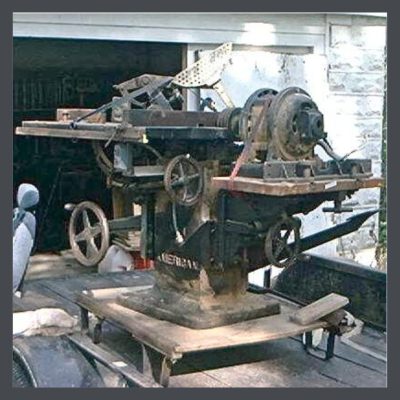
The American #1 tablesaw as it came, on an antique pallet. It was made in about 1916.
In April of that year I bought a tablesaw to replace my small Craftsman saw. It was a heavy machine with a 5HP motor. It was also in Massachusetts. I decided to have that one shipped. Shipping was not that high at the time, and the seller told me it was only 500lbs.
His company, Bartlett Chair Co., had gone out of business. He put it on an antique pallet, so I told the freight company 700lbs to account for extra weight. The day came to pick it up at the terminal, and the workers at the freight company were fascinated with it. As one of them put it on my trailer, he told me it was a lot more than 700lbs.
I later found information in an old catalog that said “American #1 tablesaw with mortiser attachment, 1250lbs”. They never did bill me for the extra weight, but lesson #5 was: never assume a seller knows the weight of any machine.
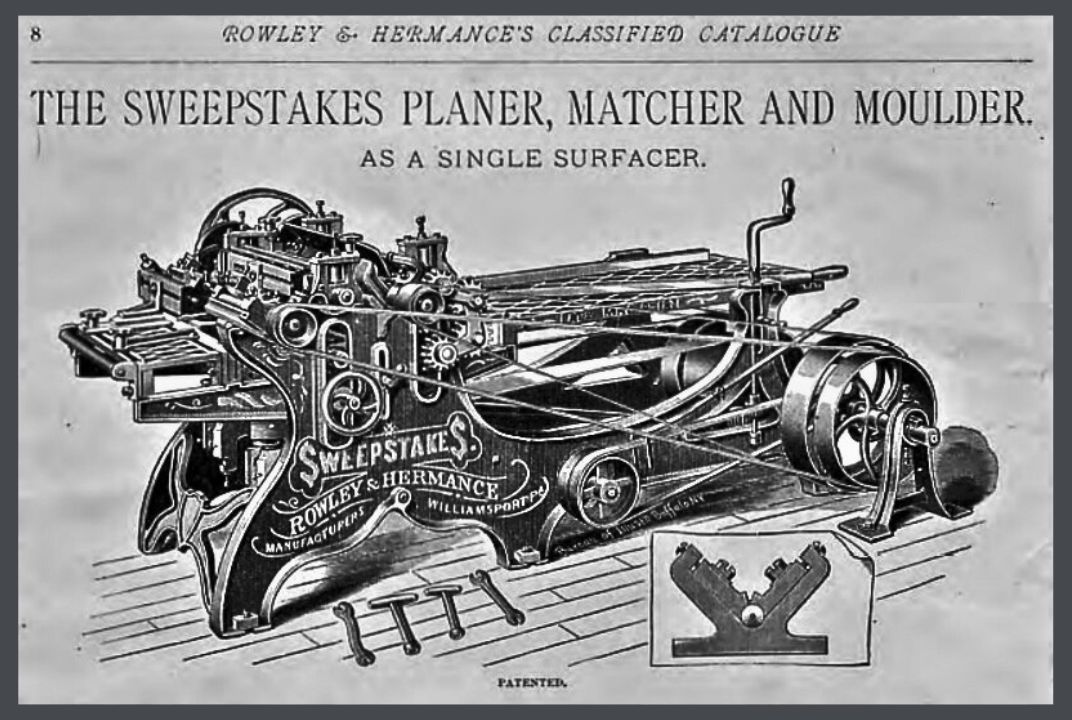
Original catalog page for Sweepstakes planer/matcher.
That same year, I would drive to West Hurley, New York to pick up a Rowley & Hermance “Sweepstakes” planer/matcher. Made in 1884, this machine could do planing, tongue and grooving, or shiplap in one pass. The seller decided he was afraid of it. While going through the mountains to pick up the machine I learned lesson #6: don’t exit the interstate onto a small, steep road with a heavy load.
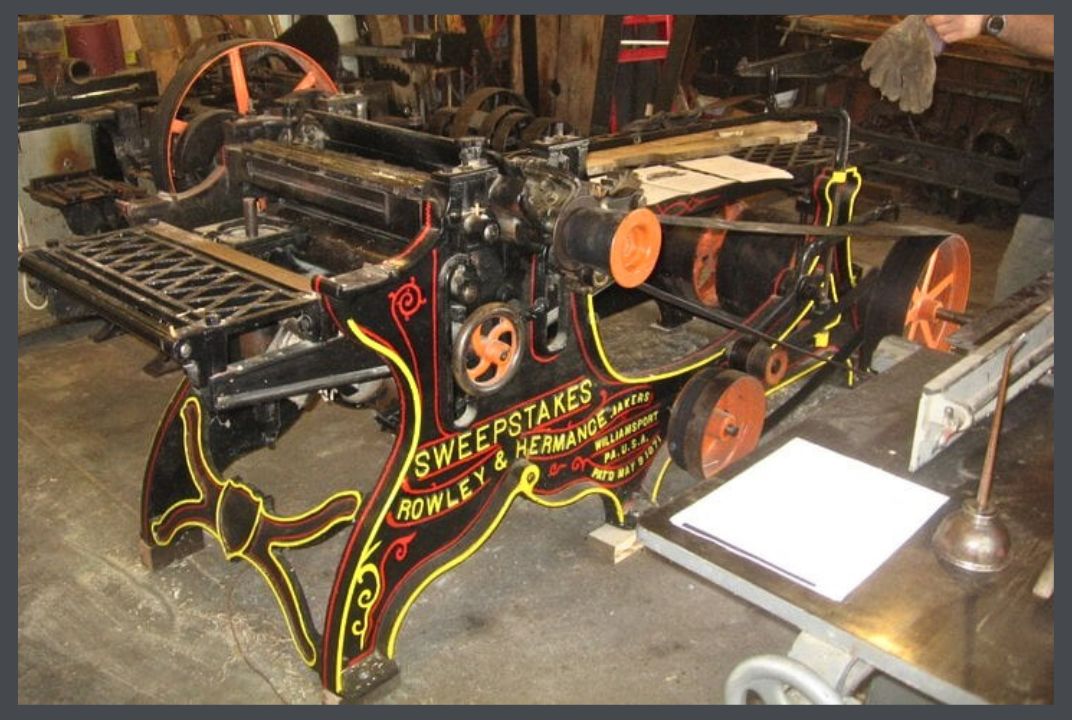
Sweepstakes planer/matcher restored.
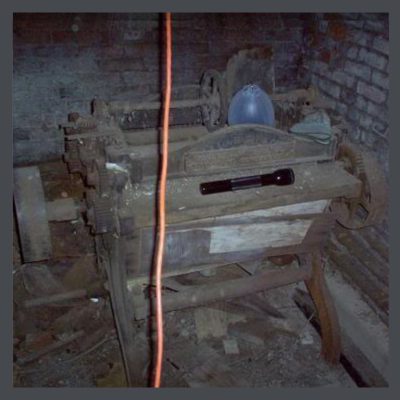
The 1880s Lovewell drum sander. It had been there since around the crash of ’29.
While searching online, I saw a large lot of machinery advertised for sale near Peoria, Illinois, in a small town called Canton. The seller wanted a great deal of money for all of it. It was enough machinery to outfit an entire cabinet shop, with nice pictures of machines setting in an old, wood floored building in what looked to be decent condition. I believe the total price was something like $50,000. I made an offer of a few hundred dollars on an interesting 24″ drum sander. The seller said he’d keep that in mind, and I didn’t hear anything more about it…until 2006.
Early in 2006, I got an email from the seller stating that he’d take my offer. I began trying to schedule a pickup date. The seller was a bit evasive on the date of pickup. Even though we had a deal, the seller continued to entertain offers from other people, hoping to get more money. At one point I told him I was coming up there with the money and would either get the sander or go home and not come back. He agreed to meet me there at the shop in April of 2006.
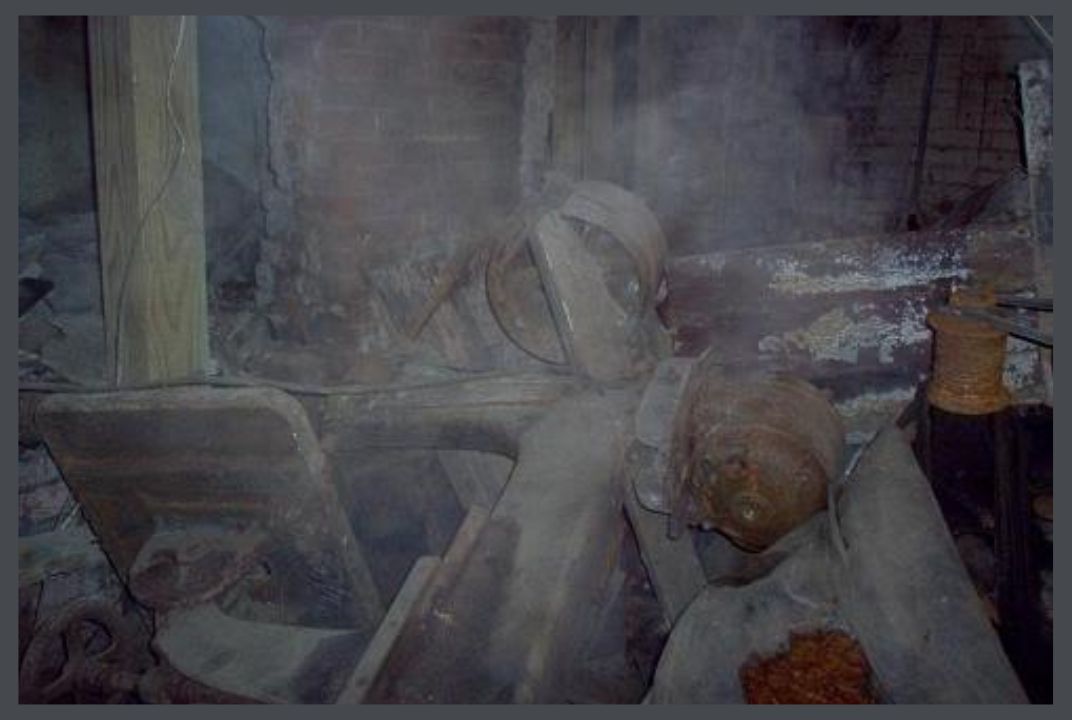
Mist rising from pile of machines fallen through the floor.
Upon our arrival, the front of the building didn’t look too bad. We walked in the front door, and noticed that the floor sloped downward about a foot from the walls to the center. There was a large dark section of NOTHING above us in the center of the building. Someone had propped up a section of sagging second floor with a crooked 4×4. Most of the machines had fallen through the floor into a pile in the basement, but my sander had been stored down there from the start, and was undamaged.
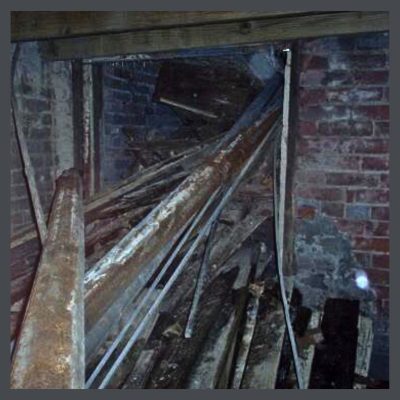
Back stairwell. We definitely weren’t going out that way!
I immediately named the place “Canton Dungeon”. I told my son Conner that if he ever let my shop get like that I’d haunt him. I spent the next 6 hours disassembling the machine and handing the pieces up through an HVAC hole in the floor. It was like working in a cave. It was dark, water was dripping, and mist rose off the piles of rubble. We did get it home safely.
The next few posts will be about the closed mills where we bought machinery. We would buy several at a time, and more than one person would make the trip. Most of these mills were over 100 years old, and provided all the original millwork for the historic houses in their communities.
![]() This article was written by Eric LaVelle, a master restorer of historic houses. He makes the woodwork with a shop full of antique machinery in Belleville, Illinoise. You can visit him on Facebook here.
This article was written by Eric LaVelle, a master restorer of historic houses. He makes the woodwork with a shop full of antique machinery in Belleville, Illinoise. You can visit him on Facebook here.
![]() ERIC LAVELLE, MASTER PRESERVATIONIST, Part 1
ERIC LAVELLE, MASTER PRESERVATIONIST, Part 1
Rescuing old houses.
![]() ERIC LAVELLE, MASTER HISTORIC PRESERVATIONIST, Part 2
ERIC LAVELLE, MASTER HISTORIC PRESERVATIONIST, Part 2
Learning about the old machines.
![]() ERIC LAVELLE, MASTER HISTORIC PRESERVATIONIST, Part 4
ERIC LAVELLE, MASTER HISTORIC PRESERVATIONIST, Part 4
The first trip to the old Lapp mill, built in 1892.
![]() ERIC LAVELLE, MASTER HISTORIC PRESERVATIONIST, Part 5
ERIC LAVELLE, MASTER HISTORIC PRESERVATIONIST, Part 5
Playing “Be Right or Die.” It’s a fun game.
![]() ERIC LAVELLE, MASTER PRESERVATIONIST, Part 6
ERIC LAVELLE, MASTER PRESERVATIONIST, Part 6
Are they lunatics, or are they heroes?
![]() ERIC LAVELLE’S OLD HOUSE MACHINES GLOSSARY
ERIC LAVELLE’S OLD HOUSE MACHINES GLOSSARY
I was clueless about these antique machines he uses & thought that you might be too!
![]() ERIC LAVELLE, Introduction to the Machines
ERIC LAVELLE, Introduction to the Machines
Manufacturing before the Age of Electricity.
![]() ERIC LAVELLE, MASTER HISTORIC PRESERVATIONIST
ERIC LAVELLE, MASTER HISTORIC PRESERVATIONIST
How does he do it?
![]() OLD HOUSE RESTORATION VIDEOS- Eric Lavelle’s Antique Wood-Working Machines
OLD HOUSE RESTORATION VIDEOS- Eric Lavelle’s Antique Wood-Working Machines
Watch the old machines in action. They are loud!!!!

Sign up for our newsletter & receive our FREE E-book, 7 VITAL Things to Do Before You Hire a Contractor.